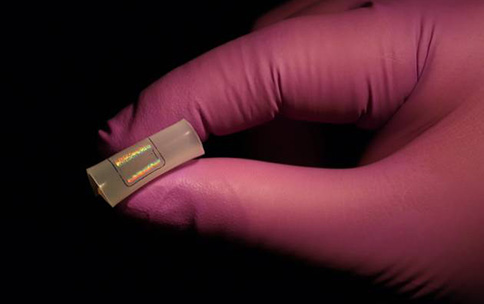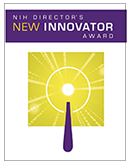
Availability of widespread rapid testing for COVID-19 has advanced since the start of the pandemic, resulting in faster infection diagnoses and improvements in public health. However, the current testing methods still display challenges due to limitations in sensitivity, the need for complex sample storage, and preparation prior to testing for more sensitive techniques.
NIH Common Fund High-Risk, High-Reward (HRHR) program researchers at Johns Hopkins University have developed a new technology that targets these challenges by increasing the accuracy and speed of virus testing through a device that can test patient samples without any need for preparation. Unlike currently used testing methods, this innovative technology is “label-free,” meaning no additional modifications to the sample is required to detect virus.
The sensor is based on the combination of multiple sensing technologies and data analysis methods that, when combined, can detect small amounts of virus in saliva samples through vibrations. The data processing algorithms can also differentiate between different types of virus, as well as detect the quantity of the virus present in the sample. This can ultimately provide clinicians and patients with a clearer picture of infection that can help in diagnosing and treating the individual.
Initial testing of the sensor has shown the sensitivity to be nearly equivalent to the currently used polymerase chain reaction (PCR) technique and as convenient as a home rapid antigen test. Furthering its innovation, the sensor can be placed on any type of surface, including building entrances, masks, and wearable devices. The combination of sensitivity, ease of use, and location adaptability, has the potential to place fast and accurate testing truly at our fingertips.
This research was supported by a National Science Foundation’s Early-concept Grants for Exploratory Research (EAGER) program and the National Institute of Health Director’s New Innovator Awards for Dr. Ishan Barman and Dr. David Gracias
Resource
Label-Free Spectroscopic SARS-CoV-2 Detection on Versatile Nanoimprinted Substrates. Paria D, Sang Kwok K, Raj P, Zheng P, Gracias DH, Barman I. Nano Letter. 2022 Mar 29. doi: 10.1021/acs.nanolett.1c04722. PMID: 35348344.
In the News
- Johns Hopkins Develops Sensor For Faster, More Accurate COVID-19 Tests
Johns Hopkins University
Image Credit: Kam Sang Kwok and Aishwarya Pantula/Johns Hopkins University
Image Caption: The small flexible sensor shown above can be placed on a multitude of surfaces for fast sensitive testing



